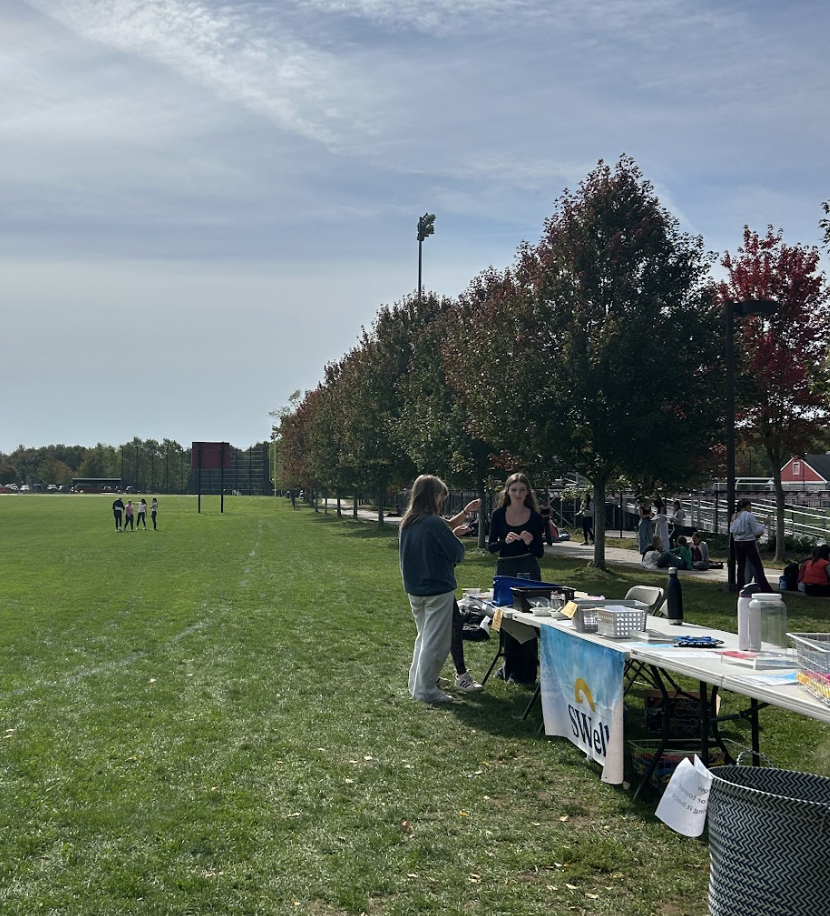Fentanyl. What is it? It is a synthetic opioid that can be used for medical pursuit, akin to morphine, but more potent and addictive. However, illegally produced fentanyl is fatal, but remains undetectable as it possesses no odor, taste, or distinct appearance. Fentanyl’s lethal deceptiveness allows drug dealers to lace other drugs with it easily, ultimately resulting in thousands of unintentional overdoses. Mostly, this illegal opioid is smuggled into the U.S. and its abundance continues to increase rapidly, the lives it takes every day skyrocketing simultaneously. Hundreds of people die each day from fentanyl overdoses, and this group of people includes a variety of individuals, not just people who fall victim to drug addictivity.
In the past few years, the deaths from fentanyl overdoses increased exponentially. Sophomore at Hingham High, Annie Kyriss, explained, “The Fentanyl crisis is really dangerous and has caused a lot of devastation for many families.” Tragic stories about the deaths of children, teens, and adults have been plastered across news stories throughout the nation. Recently, a one-year-old baby in a daycare in the Bronx, New York, died due to exposure to fentanyl, yet incidents like this are not uncommon. More than a humanly fathomable amount of parents have been convicted of murder, in all degrees, and manslaughter for exposing their children to fentanyl, which, in turn, resulted in the death of their children.
However, this drug poses the greatest threat to teens. Teens are prone to impulsive decision making due to the fact that during the adolescent years, the frontal lobe of the brain, which controls emotional responses, higher level thinking, and impulse control, is underdeveloped. An underdeveloped frontal lobe combined with a lack of sleep and negative emotions emphasized by a strong surge of hormones can lead to the desire to escape reality. While escaping reality could involve reading a book, watching a movie, or focusing on physical exercise, some teens turn to drugs. In the past, while drugs were dangerous, taking them would not result in death unless an overdose was intentional. Today, a teen who decides to make one impulsive decision could be signing their death sentence.
Sophomore Tommy Hartnett expressed, “I definitely think the Fentanyl crisis could have been avoided if we had higher restrictions on social media use for kids and who they are connecting with online.” Social media clearly plays a role in perpetuating this crisis. However, instead of using social media for dangerous interaction with strangers, the wide outreach and influence that it wields could be used to spread awareness of the dangers of fentanyl and save thousands of lives. Hartnett continued, “We need more awareness about lacing drugs because one of the big things is that it’s not that people want fentanyl, it’s that people are lacing drugs with fentanyl because it’s cheap.” This lack of awareness is one of the main contributors to the mass destruction the fentanyl crisis has caused for thousands of individuals throughout the U.S. Thousands of people could have survived if information surrounding the danger of fentanyl was spread and shared consistently to all age groups.
Overall, the fentanyl crisis is a pressing conflict in our nation. Children, teenagers, adults: everyone is susceptible to death by fentanyl. The producers of these drugs continue to configure ideas in order to manipulate people into buying their fentanyl laced substances. For example, they have begun to shape fentanyl into tablets that appear as candy in order to target the younger generations. This explains the vitality of awareness in this particular conflict. If people are not warned of how this drug could be presented to them, who could present it to them, and the effects of taking fentanyl, then they will continue to lose their lives, leaving their families heartbroken and shattered. While the majority of people may not possess the ability to prevent fentanyl from flooding the drug industry, they can still evoke change and save lives by spreading awareness.
































